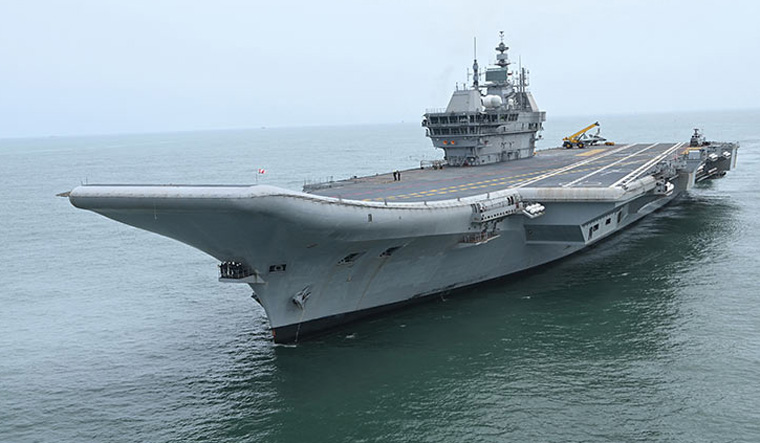New Delhi: For the first time, the Indian Navy has disclosed the critical role it played during Operation Sindoor—India’s firm response to the Pahalgam terror attack. Speaking at a joint forces press briefing, Vice Admiral AN Pramod detailed how the Navy’s forward deployment in the Arabian Sea strategically limited the movement of the Pakistan Navy, effectively forcing them to stay docked or remain close to their shores.
“In the wake of the Pahalgam incident, our aircraft carriers, surface ships, submarines, and naval aviation assets were mobilised at sea with complete combat readiness,” said Vice Admiral Pramod. “Within 96 hours, we conducted multiple live weapon drills in the Arabian Sea to validate our readiness and ensure our systems, personnel, and tactics were fully aligned for precision strikes if called upon.”
The Vice Admiral emphasized that the Navy remained on high alert, positioned in a strong deterrence posture. He confirmed that India was prepared to strike strategic targets, including key locations like Karachi, if the situation escalated further. “Our forward deployment made the Pakistani naval and aerial units adopt a defensive stance. Most of their assets stayed within harbours or close to the coastline, under continuous surveillance by us,” he noted.
From the very beginning, India’s response, he said, was calculated and restrained. “We ensured that our actions were in line with our broader objective—containing the threat without unnecessary escalation. All options, including offensive action at sea, were on the table, but every step was coordinated with the Army and Air Force,” he added.
Vice Admiral Pramod also credited the Navy’s preparedness and its operational dominance at sea as a key factor in Pakistan’s sudden appeal for a ceasefire. “Our coordinated presence and readiness across all three forces created the strategic pressure that contributed to de-escalation,” he said.
In the same briefing, Lieutenant General Rajiv Ghai, India’s Director General of Military Operations, shared that he had directly communicated with his Pakistani counterpart through a hotline. “I conveyed that last night’s ceasefire violations were unacceptable and warned that any further provocation will be met with a strong and immediate response,” he asserted.
Air Marshal AK Bharti, representing the Indian Air Force, echoed the same tone of calculated strength. He explained that India’s air operations were aimed specifically at military infrastructure, avoiding civilian areas entirely. “We demonstrated our ability to strike with accuracy while showing restraint. Our mission was focused solely on dismantling terror infrastructure—not escalating a war,” he said.
Air Marshal Bharti also shed light on Pakistan’s continuous drone assaults on Indian territory. “Night after night, we were targeted by waves of UAVs and drones. Though we absorbed those provocations with composure, we eventually had to respond—and even then, our retaliation remained measured and proportional,” he added.
In conclusion, the armed forces made it clear that while India does not seek conflict, it is more than capable of defending itself decisively. “Our issue is with terrorism, not with the people or military of Pakistan,” they said, underscoring that the country’s actions have been guided by discipline, clarity, and strategic maturity.
























